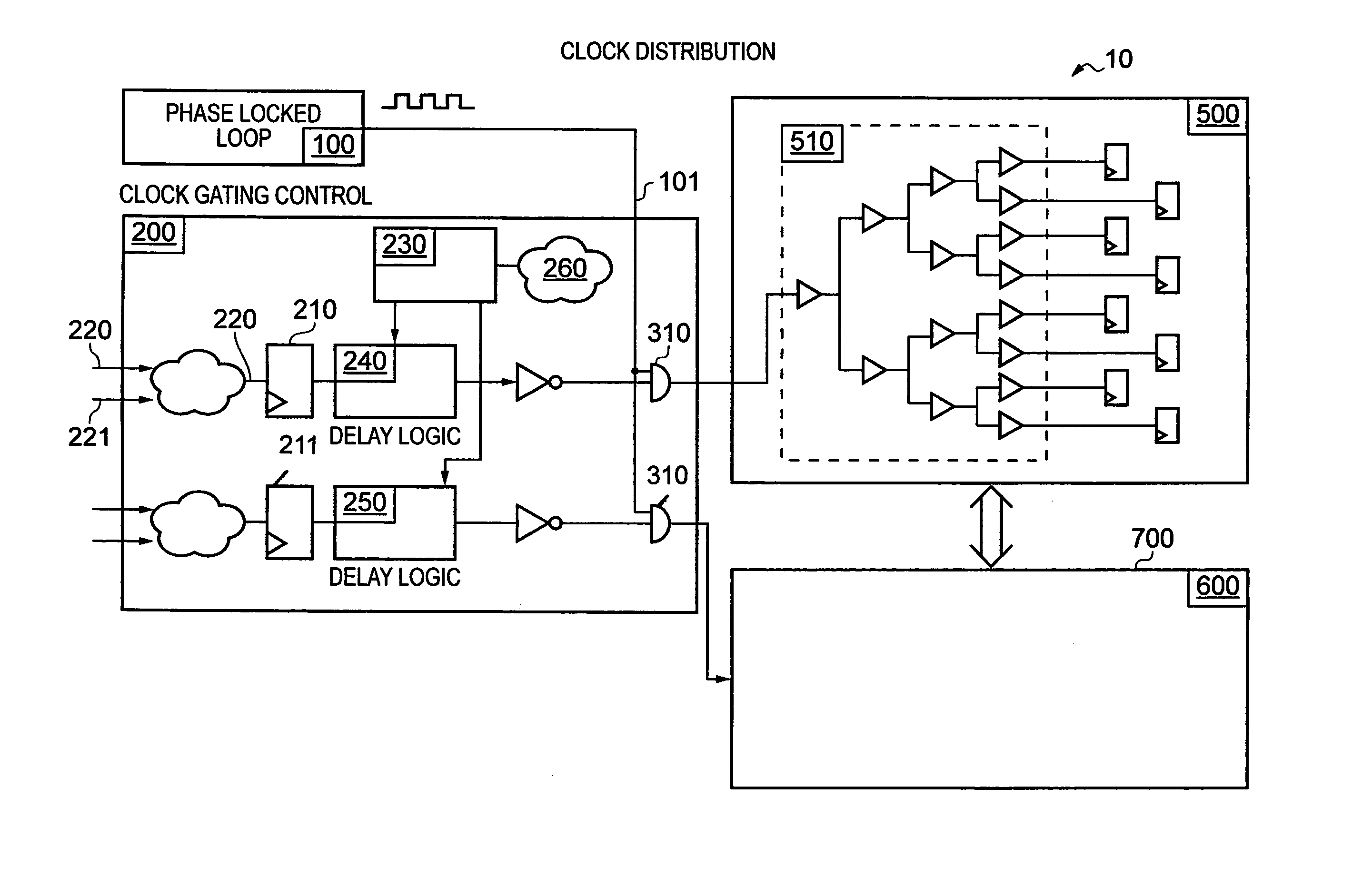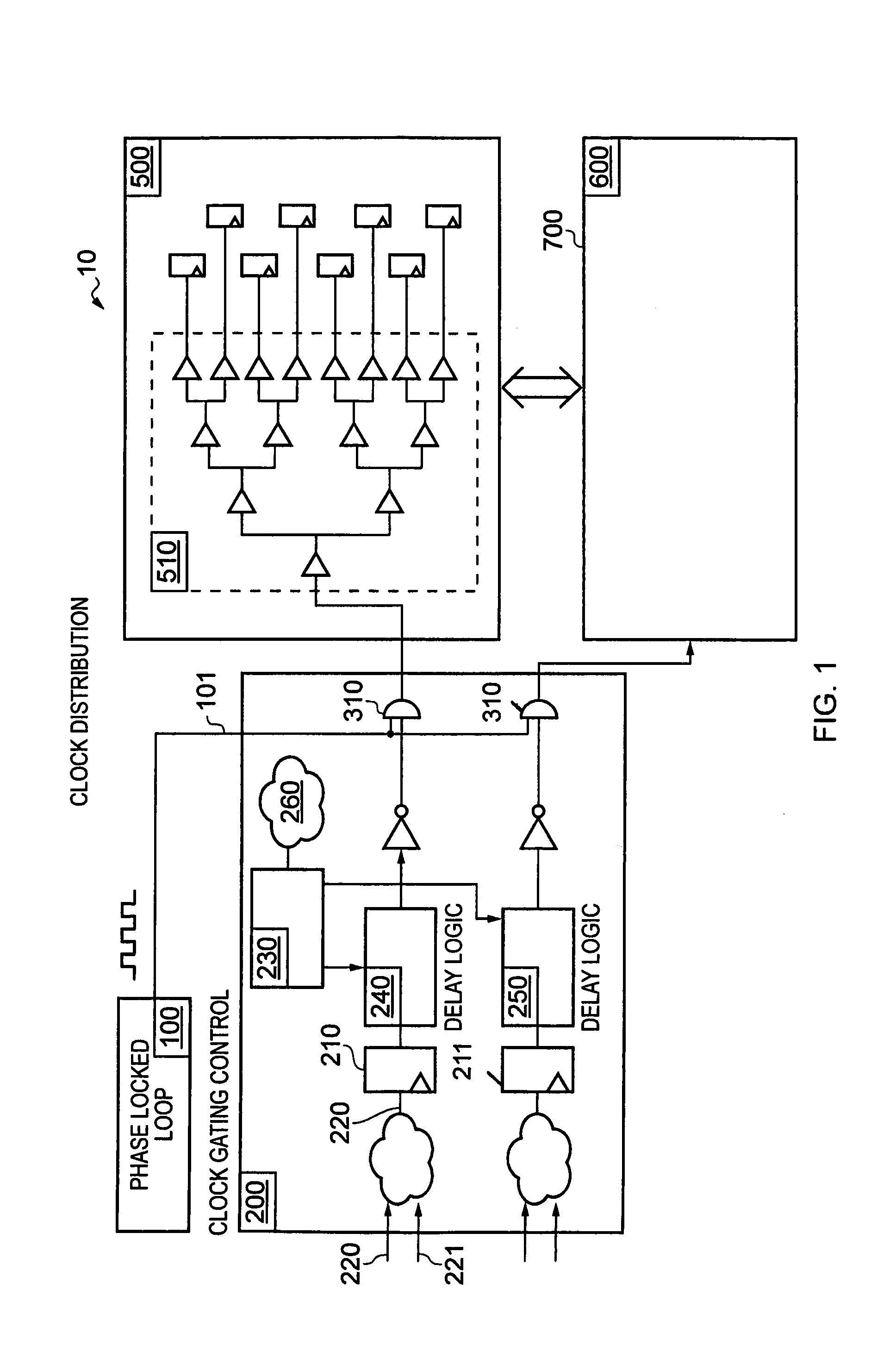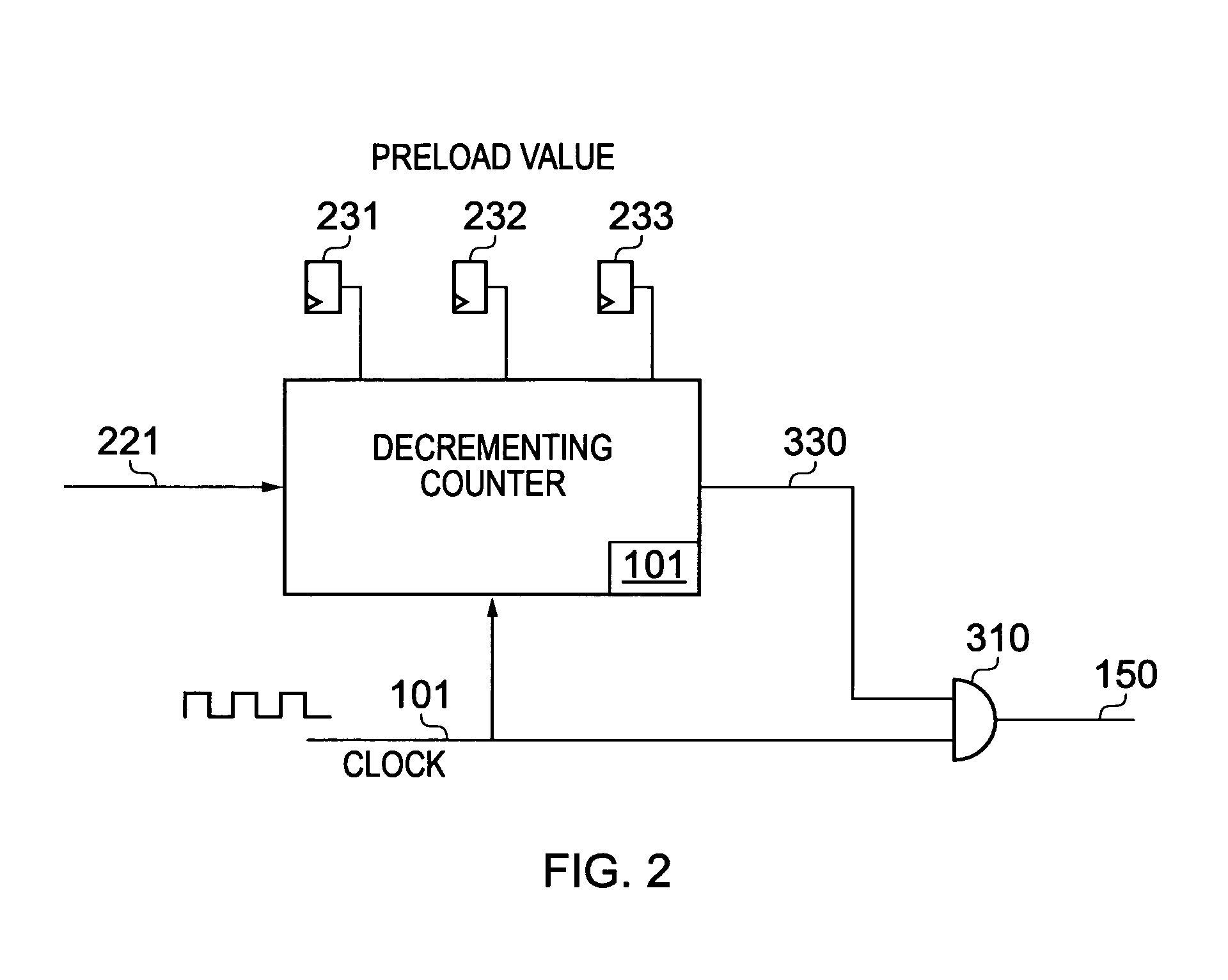Control of clock gating
a clock gating and control technology, applied in the direction of transmission, data conversion, sustainable buildings, etc., can solve the problems of unnecessary power consumption and achieve the effect of saving power and unnecessary power consumption
- Summary
- Abstract
- Description
- Claims
- Application Information
AI Technical Summary
Benefits of technology
Problems solved by technology
Method used
Image
Examples
Embodiment Construction
[0066]FIG. 1 shows a data processing apparatus 10 comprising a clock generation circuit 100 in the form of a phase locked loop that generates a clock signal 101, clock gating control circuitry 200 which receives this clock signal and either forwards it to processing module 500 or processing module 600 or does not forward it, but rather gates the signal.
[0067]The two modules 500 and 600 use a communication link 700 to interact one with another. Their modes of operation (either inactive, sleep mode, or active operational mode) are separately controlled and thus, their clock signals are sent or gated independently of each other by clock gating control circuit 200. Module 500 is shown as comprising a clock distribution tree 510 for distributing the clock signal to the synchronous circuitry within the module. A similar tree (not shown) is present in module 600.
[0068]The clock signal 101 is generated under the control of the Phase Locked Loop (PLL) 100. One skilled in the art will know th...
PUM
 Login to View More
Login to View More Abstract
Description
Claims
Application Information
 Login to View More
Login to View More - R&D
- Intellectual Property
- Life Sciences
- Materials
- Tech Scout
- Unparalleled Data Quality
- Higher Quality Content
- 60% Fewer Hallucinations
Browse by: Latest US Patents, China's latest patents, Technical Efficacy Thesaurus, Application Domain, Technology Topic, Popular Technical Reports.
© 2025 PatSnap. All rights reserved.Legal|Privacy policy|Modern Slavery Act Transparency Statement|Sitemap|About US| Contact US: help@patsnap.com



